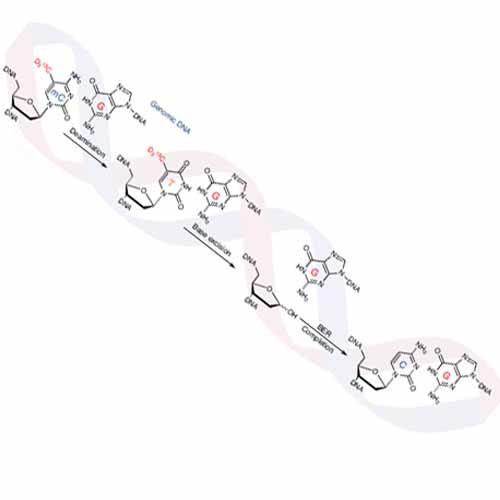Active turnover of genomic methylcytosine in pluripotent cells
2020-08-10
Fabio Spada, Sarah Schiffers, Angie Kirchner, Yingqian Zhang, Gautier Arista, Olesea Kosmatchev, Eva Korytiakova, René Rahimoff, Charlotte Ebert; Thomas Carell
Nat Chem Biol., 2020, 16, 1411–1419
Epigenetic plasticity underpins cell potency, but the extent to which active turnover of DNA methylation contributes to such plasticity is not known, and the underlying pathways are poorly understood. Here we use metabolic labeling with stable isotopes and mass spectrometry to quantitatively address the global turnover of genomic 5-methyl-2′-deoxycytidine (mdC), 5-hydroxymethyl-2′-deoxycytidine (hmdC) and 5-formyl-2′-deoxycytidine (fdC) across mouse pluripotent cell states. High rates of mdC/hmdC oxidation and fdC turnover characterize a formative-like pluripotent state. In primed pluripotent cells, the global mdC turnover rate is about 3–6% faster than can be explained by passive dilution through DNA synthesis. While this active component is largely dependent on ten-eleven translocation (Tet)-mediated mdC oxidation, we unveil additional oxidation-independent mdC turnover, possibly through DNA repair. This process accelerates upon acquisition of primed pluripotency and returns to low levels in lineage-committed cells. Thus, in pluripotent cells, active mdC turnover involves both mdC oxidation-dependent and oxidation-independent processes.








